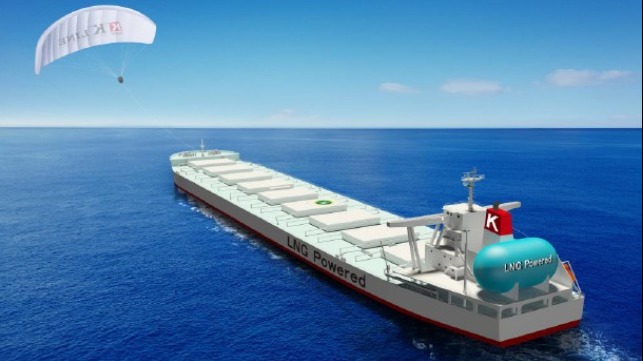JFE Steel to Build Japan’s First LNG-Fueled Newcastlemax Bulkers

Japan’s steel company JFE Steel announced a multi-part agreement with the country’s shipbuilders and large shipping companies for the introduction of three new LNG-fueled newcastlemax bulkers. The ships, which will be Japan’s first large LNG-fueled bulkers, are part of the steel company’s overall plan to become carbon neutral by 2050.
Designed by Nihon Shipyard, the 210,000 dwt vessels will have a length of 984 feet and a beam of 164 feet. The ships will be built by Japan Marine United and Imabari Shipbuilding with delivery dates in 2024 and 2025. They will be fueled with LNG, although JFE Steel said it also plans to consider using zero-emission ships powered by other eco-friendly fuels such as ammonia and carbon-recycling methane.
“JFE Steel’s shift to LNG-powered transportation will support global efforts to create a more carbon-neutral world by reducing greenhouse gas emissions generated during international shipping,” the steel company said in its announcement. “Going forward, JFE Steel will continue to contribute to a more sustainable world by collaborating intensively with the entire JFE group and outside partners to reduce CO2 emissions across its entire supply chain.”
The ships, which will transport iron ore and coal to Japan for JFE’s steel mills, will be operated under long-term charters by three of Japan’s largest shipping companies. JFE said it signed long-term deals with NYK Line, Kawasaki Kisen Kaisha (K Line), and Mitsui O.S.K. Lines (MOL) for the operation of the vessels.
K Line said that the first LNG-fueled bulk carrier will be ordered from the Nihon Shipyard Co., with the vessel scheduled to be delivered in the first half of 2024. They called the ships a “next generation vessel,” noting that in addition to the reduction in emissions from the use of LNG, that its vessel will be fitted with the company’s prototype automated kite system. Known as Seawing the system increases efficiency by adding supplemental wind propulsion.
Separately, MOL also confirmed its involvement in the project. They reported that they have reached a basic agreement on the construction of the vessel with Nihon Shipyard. MOL reported that the vessel it will operate under the long-term charter is due for delivery in January 2025.
